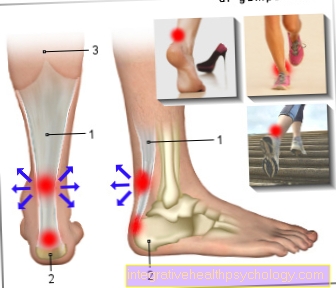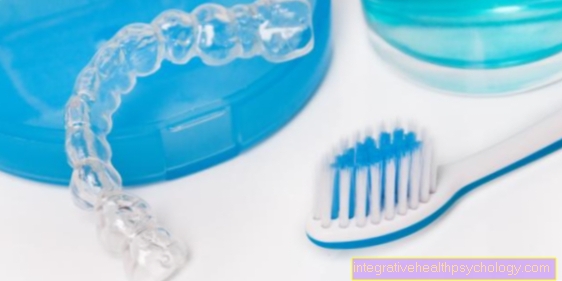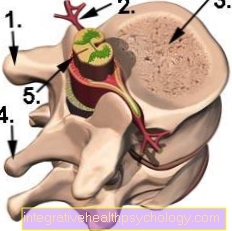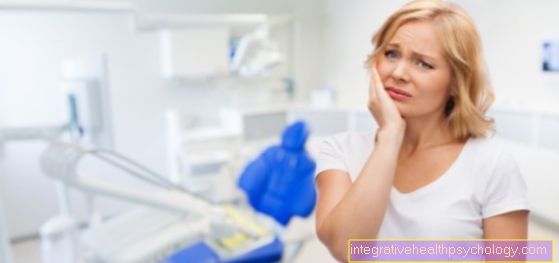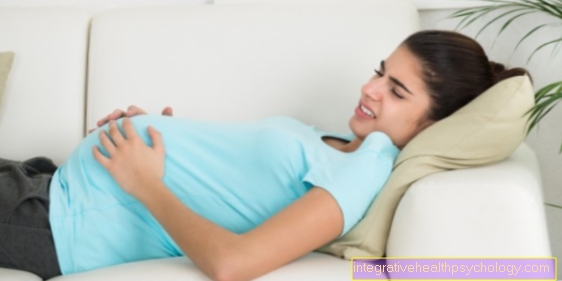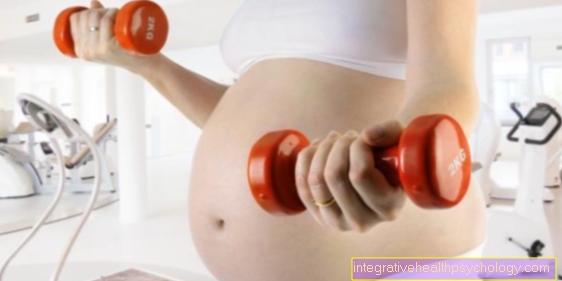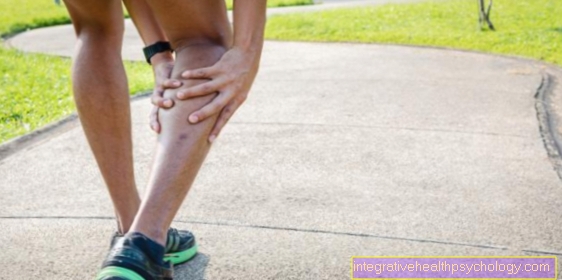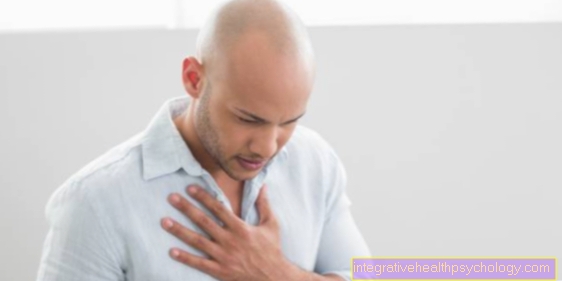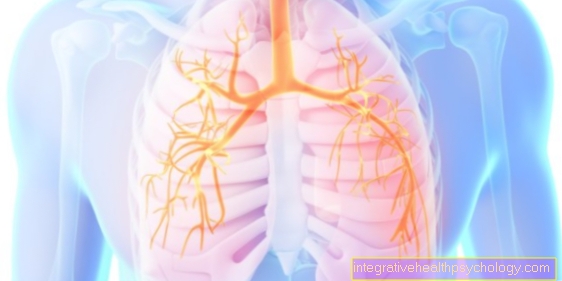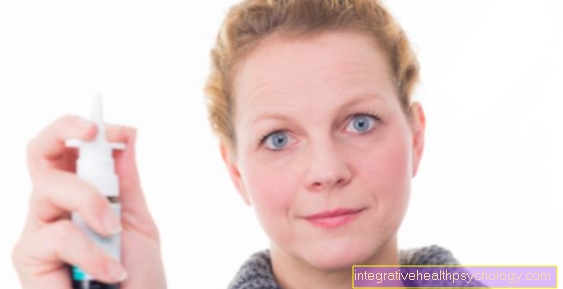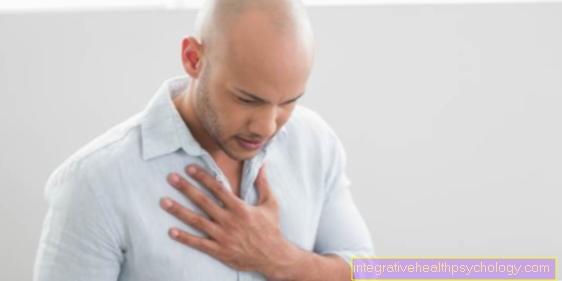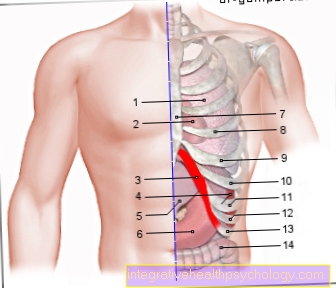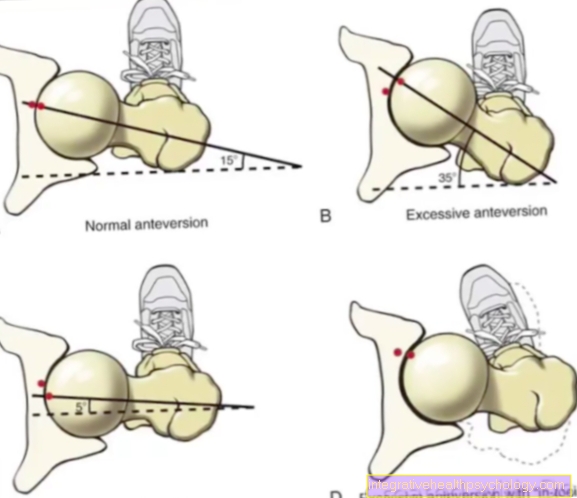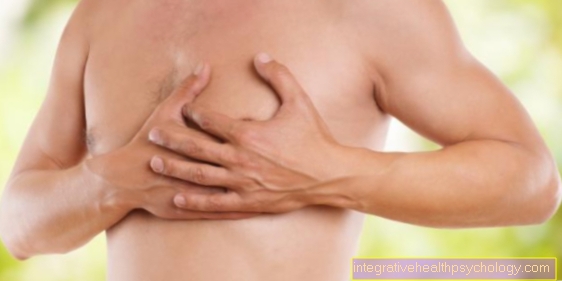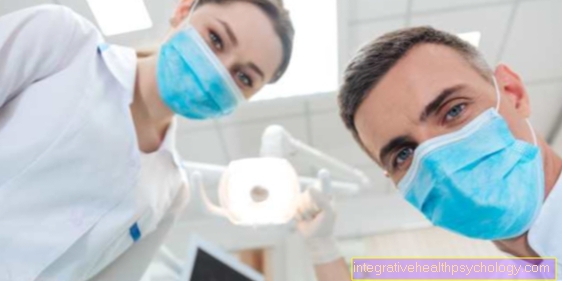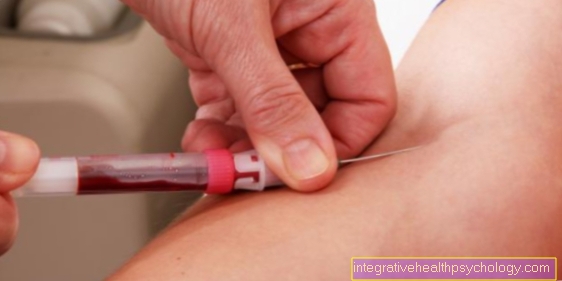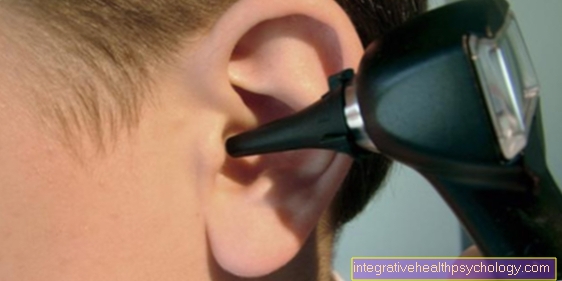Treatment of the herniated disc in the subacute state
In the subacute state, in addition to pain relief, there is also the teaching of back-friendly everyday movements and the functional training of the stabilizing ones Musculature for building a trunk muscle corset in the foreground.
ADL
Activities of daily life = back-friendly behavior in everyday life and at work
Standing upright:
Aims:
- Learning to stand upright
- Economic tension of the postural muscles
- Relief of the passive support apparatus
- Starting position: Stand
First of all, the patient should develop a body awareness of how the difference between the "sloppyStanding and having an active posture feels like. When standing casually, one hangs in the passive support apparatus Spine, consisting of the bony components of the spine, the capsular and ligamentous apparatus and the Band washers. In the long run, passive standing leads to an overload of the support system, an increased arching of the back and hyperextension Knee joints.
To a active posture becomes a good active support system (deep and superficial Core muscles) needed to maintain the upright posture for several hours a day. Only after a long period of practice is an upright posture perceived as a relief, since the trained muscles can be used economically with less tension and strength. If possible, long periods of standing should be interrupted by switching from one leg to the other and by relaxing while sitting.
The help of a therapist and a mirror is useful for training body awareness, teaching correct posture and economical weight distribution. With the mirror, the patient is able to independently control his posture correction at home.
Exercise execution:
- Active pulling up of the longitudinal arch of the foot
- Slight knee flexion
- Active pulling up of the pelvic floor muscles
- Active tension of the deep abdominal muscles
- Straightening the sternum - show gold medal -
- Long stretch of the neck
Correct sitting

In acute back pain, prolonged sitting can often exacerbate the pain, as the load pressure on the intervertebral discs is higher than when standing or walking. Sitting for long periods should therefore be avoided in an acute state.
First of all, with the help of the therapist and a mirror - self-control at home possible - the patient should develop a body awareness of how the difference between the "sloppySitting and an active upright posture feels like. When sitting casually, one hangs in the passive supporting apparatus of the spine, which leads to an increased pressure load on the intervertebral discs and the ligaments in the lumbar spine. In addition, the "hunched back posture" can cause neck pain due to the overstretching of the cervical spine.
Starting position: sitting on a stool or chair
Aims:
- Learning to sit upright
- Economic tension of the postural muscles
- Pressure relief of the intervertebral discs
Appointment with a specialist for a herniated disc?

I would be happy to advise you!
Who am I?
My name is I am a specialist in orthopedics and the founder of .
Various television programs and print media report regularly about my work. On HR television you can see me every 6 weeks live on "Hallo Hessen".
But now enough is indicated ;-)
A herniated disc is difficult to treat. On the one hand it is exposed to high mechanical loads, on the other hand it has great mobility.
Therefore, treating a herniated disc requires a lot of experience.
The aim of any treatment is treatment without surgery.
Which therapy achieves the best results in the long term can only be determined after looking at all of the information (Examination, X-ray, ultrasound, MRI, etc.) be assessed.
You can find me in:
- - your orthopedic surgeon
14
Directly to the online appointment arrangement
Unfortunately, it is currently only possible to make an appointment with private health insurers. I hope for your understanding!
Further information about myself can be found at

Exercise execution:
- The feet are firmly on the floor, hip and knee angles not less than 90 °, the legs are apart
- Find the middle position between the “hollow back” and the “round lumbar spine”, sit on the bones of the seat
- Active pulling up of the pelvic floor muscles
- Active tension of the deep abdominal muscles
- Straighten the sternum - show gold medal -
- Shoulder blades in the direction of the trouser pockets
- Long stretching of the neck = suggestion of a double chin
Of course, this active sitting cannot be maintained for long by an inexperienced patient. By repeatedly practicing the active sitting posture, the basic tension of the muscles is built up accordingly and can then be activated with less effort over a longer period of time. In any case, the patient suffering from intervertebral discs should think about purchasing a piece of furniture to relieve the spinal column for at home and at work.
Relieving tips:
- Frequently changing posture, leaning on a backrest or table
- Change of position on the chair forwards and backwards. Slipping only by the strength of the glutes (ham slides)
- Turn the chair face-on towards the person next to you
- Use pillows under the buttocks (possibly a beveled wedge pillow) and in the lumbar spine to better support the back
- set up an ergonomic workplace
- Description Seating furniture and ergonomic workplace
The back-friendly bending and lifting

When bending over and especially when lifting with the back bent and additionally rotated, there is a massive increase in pressure on the intervertebral discs.
Most patients with lumbar disc herniation have already experienced this painfully. Any incorrect posture when bending and lifting can cause increased back pain and, in the worst case, promote a recurrence of the herniated disc. Above all, prolonged work from a stooped starting position, such as in the household, in gardening or in certain professions, and “incorrectly lifting and carrying” heavy objects should be avoided. However, the conclusion should not be drawn from this to avoid these activities and only to take it easy, which would ultimately only result in further muscle loss and progressive reduction in physical performance. The activities just need to be carried out in a different way. The prerequisite for this, however, are good leg muscles and the most healthy knee joints possible.
Aims:
- Learning to bend and lift in a back-friendly, pain-free way
- Pressure relief of the intervertebral discs when bending and lifting
- Preventing a relapse (relapse)

Starting position: step position
Execution of the stoop:
- stand on the one-legged knee with support on the thigh
- the upper body is brought forward as straight as possible
- Light ones! Pick up the object or e.g. tie your shoes
- back to standing position with renewed support on the thigh
- if the strength of the leg muscles is not sufficient, you can use a stool to support yourself when going up and down
- alternatively, when tying shoes or cutting nails, put a foot on a step or the edge of the bathtub
- Carry out work on the floor in a quadruped position (knee pads)
Starting position: standing with legs apart, feet pointing outwards
Execution of lifting:
- Get as close as possible to the object to be lifted and stand straight in front of it
- when you bend your knees, your buttocks move backwards at the same time
- At the same time, the upper body is stretched out from the hip joints while the trunk muscles are tensed
- the object is lifted and carried close to the body
- place the object directly in front of the body again
- the way back is done in reverse
- When carrying the items, divide them into 2 bags
Cave: asymmetrical, one-sided loading of the spine should be avoided

